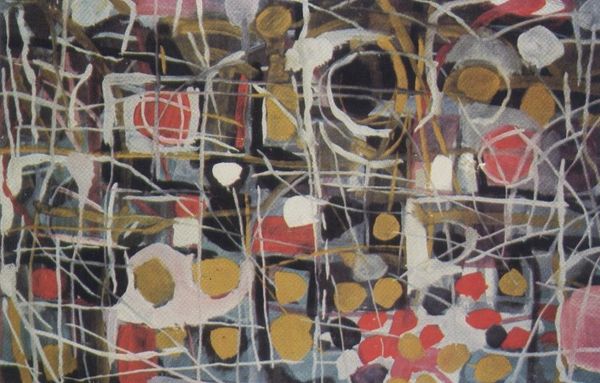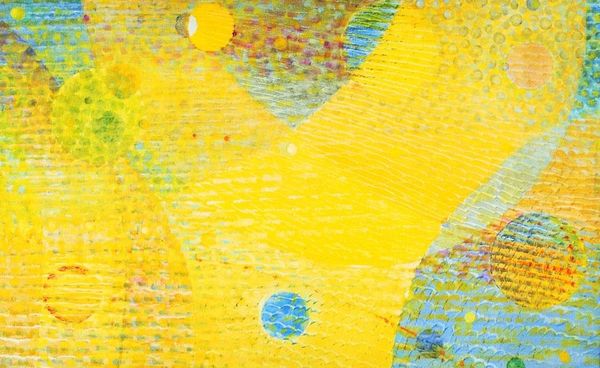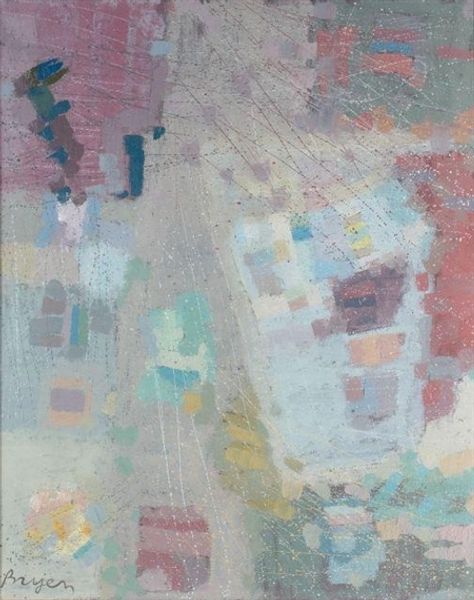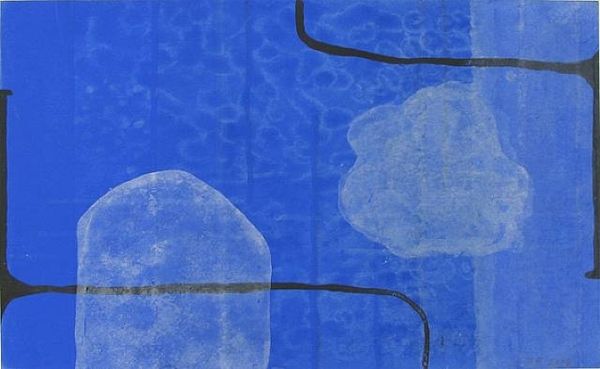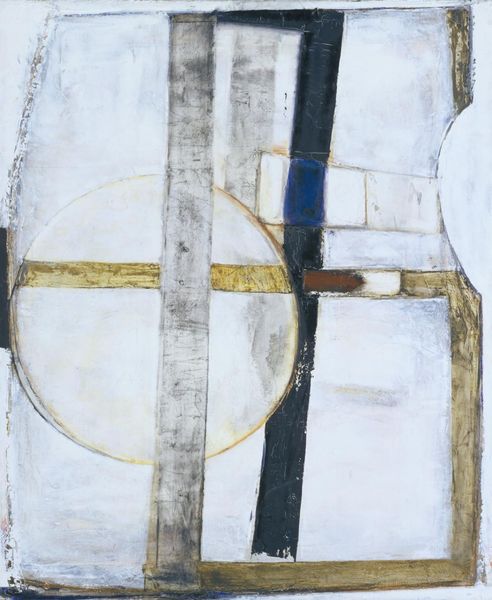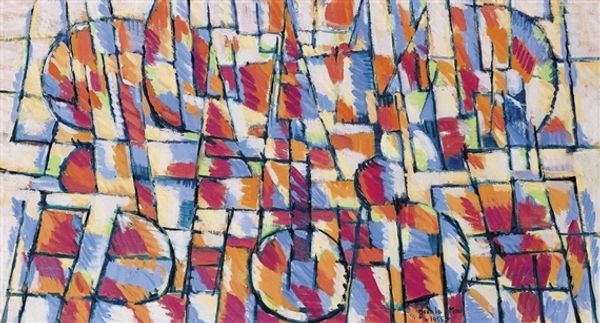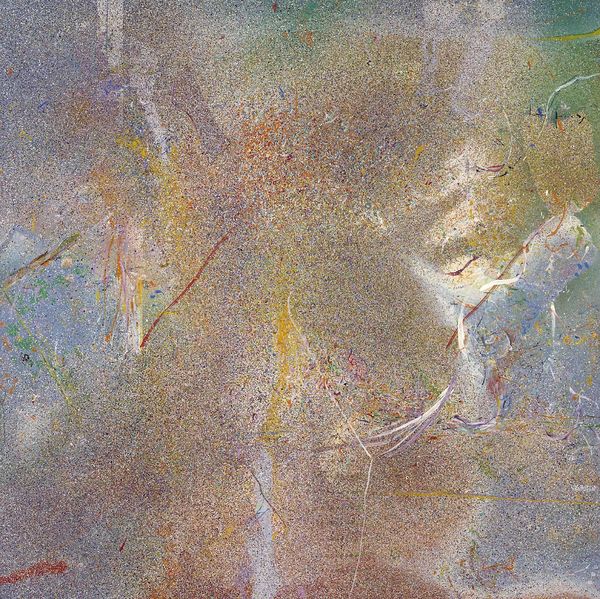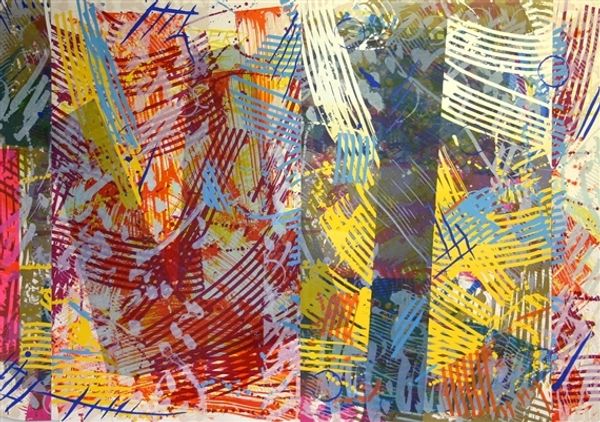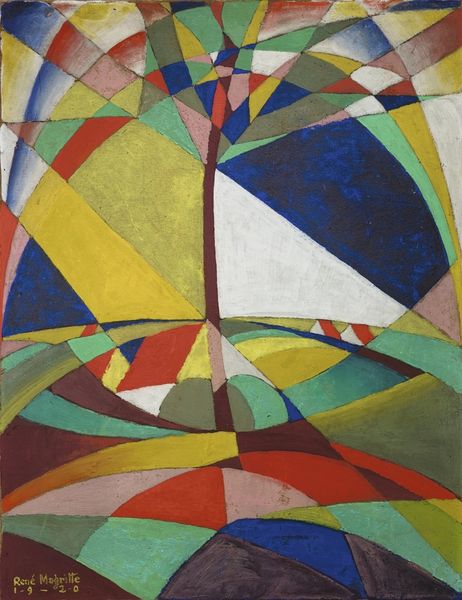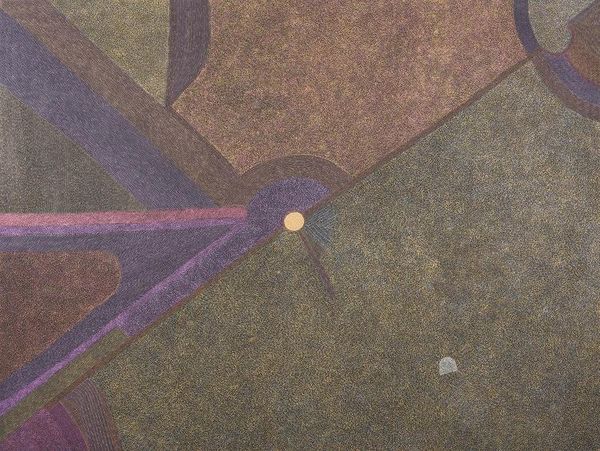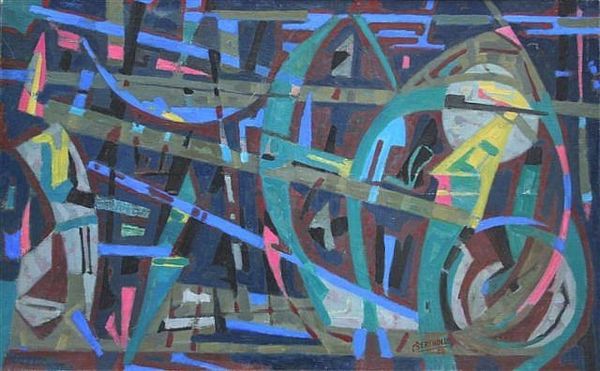
painting, oil-paint
painting
oil-paint
oil painting
geometric-abstraction
abstraction
line
modernism
Copyright: Public domain Belarus
Curator: Standing before us is Wladyslaw Strzeminski’s oil painting titled "Pejzaz," created in 1948. Editor: It strikes me as a deeply unsettling landscape, despite its cheerful color palette. The juxtaposition of sharp lines with soft, amorphous shapes creates a palpable tension. Curator: Note how Strzeminski utilizes geometric abstraction here. The stark lines bisect the composition, imposing a structural rigor upon what otherwise might feel like a free-flowing, almost whimsical arrangement of forms. Consider, for instance, the interplay between the angular black lines and the meandering blue squiggles on the right. Editor: Indeed. Yet the "whimsy" reads differently when one acknowledges the historical context: Strzeminski painted this just after surviving the Nazi occupation of Poland. I read those harsh lines as barriers, fractures indicative of a world utterly broken. Even the colors—pastel pinks, greens, blues—feel ironically detached, almost as if to highlight an emotional numbness born from trauma. It resonates with how the political landscape sought to delegitimize and later suppress his theories on art during the postwar Stalinist era. Curator: Precisely, yet look closely at the textural variety! Strzeminski employs a rich impasto technique, building layers of oil paint to create a tactile surface. See how this deliberate materiality enriches the formal properties? This very material insistence feels vital to how it conveys visual depth despite being primarily abstract. Editor: The artist was a dedicated socialist and ardent believer in creating egalitarian societies. Those subtle textures mirror, perhaps, the grit and relentless labor required to build his idea of the utopian state – an endeavour marred with complexities that he personally experienced due to persecution later in life. He presents not a perfectly smooth canvas, but a world that's built up from effort. Curator: Thank you. Your reading highlights precisely what I also find engaging about "Pejzaz": a seemingly simple visual field yields endless structural insights. Editor: And infinite opportunities for critical, politically grounded reflection.
Comments
No comments
Be the first to comment and join the conversation on the ultimate creative platform.
